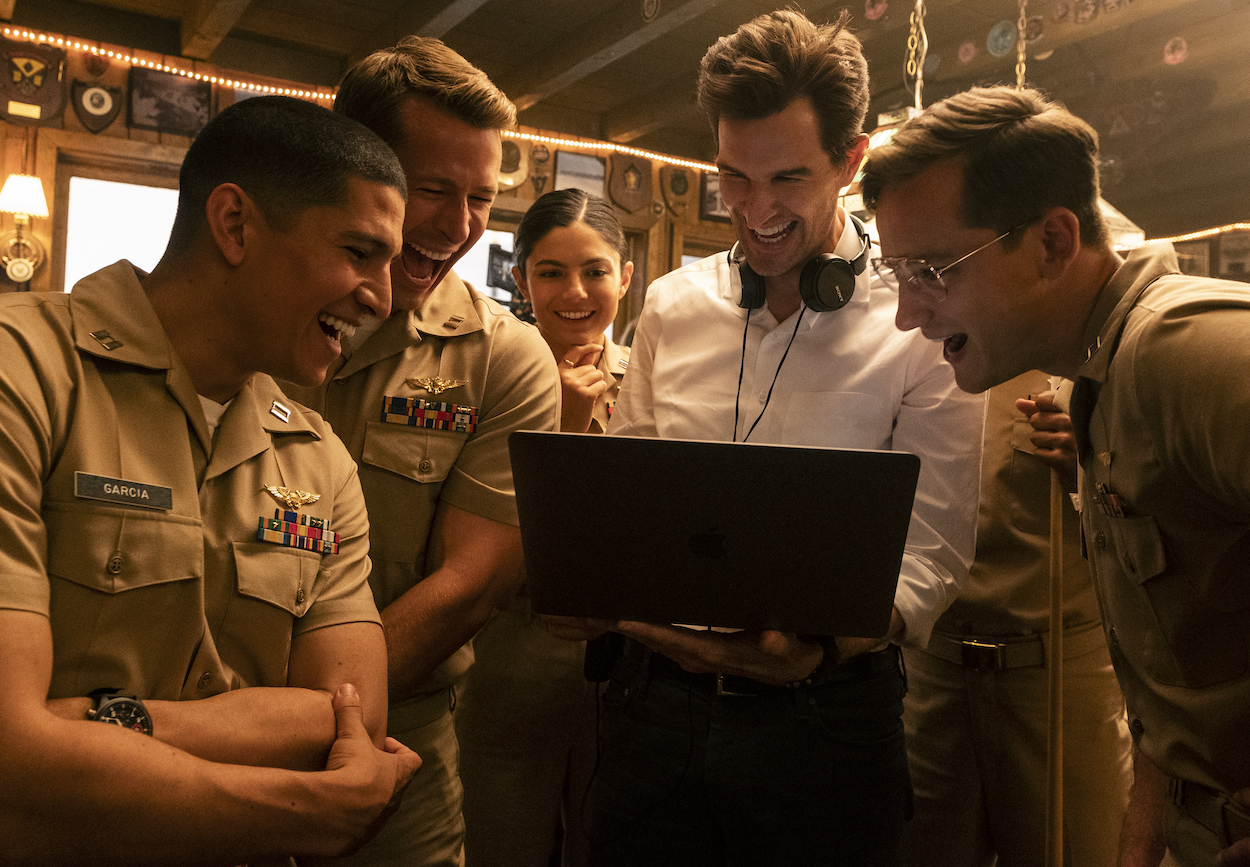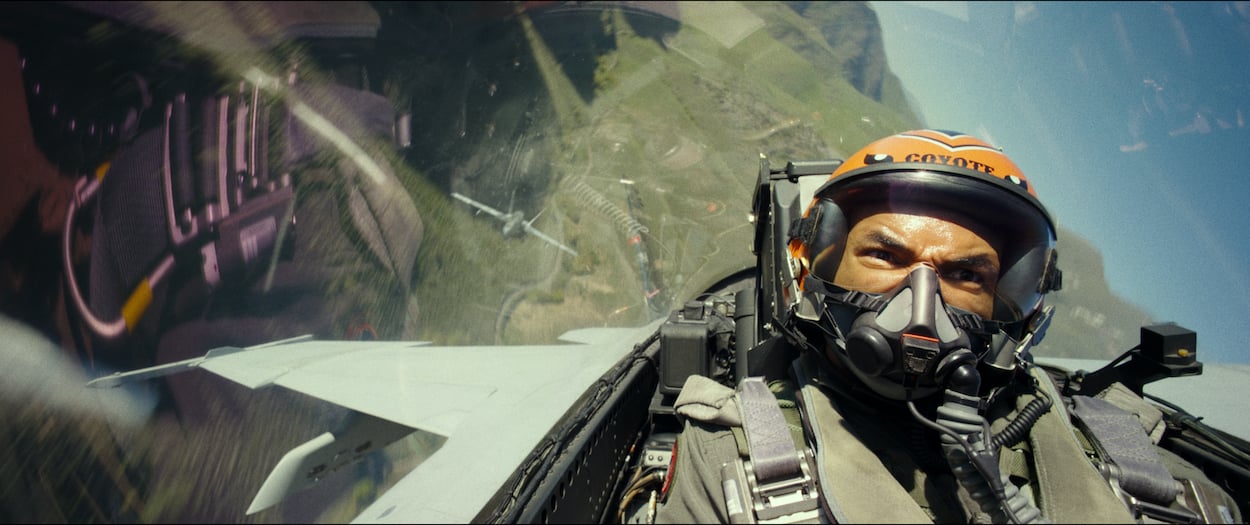‘Top Gun: Maverick’ Director Joseph Kosinski Reveals the Flaw He Chose to Leave in the Movie
Tom Cruise is back on top with Top Gun: Maverick. The long wait between the original and the sequel didn’t dampen demand. The practical effects, positive reviews, and Memorial Day holiday helped it blast out of the hangar with more than $126 million at the North American box office its first weekend. Cruise famously does his own stunts, which means he (and his co-stars) are really in fighter jet cockpits for the movie. Top Gun: Maverick director Joseph Kosinski shot those scenes on IMAX cameras, and he chose to keep one flaw in the movie that lets viewers see some of that equipment.

‘Top Gun: Maverick’ relied heavily on IMAX cameras
Kosinski joined Collider for a video interview (see it via YouTube) in which he discussed many of the technical details of the movie. The director spent quite a bit of time talking about shooting in IMAX.
Kosinski revealed to interviewer Steve Weintraub that he presents nearly one hour of the movie in IMAX ratio. IMAX presentations usually check in at 1.43:1 or 1.90:1, while widescreen format is 2.39:1. Basically, when the planes are in the air, the image on screen gets bigger, and audiences can see more of the action.
The director relied on several IMAX cameras for those scenes. Kosinski told Weintraub he placed multiple cameras in the cockpits, which helped realistically capture high-speed flight.
“So what you’re seeing on screen is captured for real,” Kosinski said. “The result is you’re not only going to get the sense of speed and light and sky and movement that you get from being in an airplane, but you’re gonna actually see the forces on their bodies as they pull Gs flying in these amazing machines.”
Kosinski hid the IMAX equipment well, but the director chose to keep one flaw in Maverick, and eagle-eyed viewers might be able to see it during the movie.
‘Maverick’ director Joseph Kosinski chose to keep a flaw in the movie

The IMAX cameras Kosinski and director of photography Claudio Miranda used allowed them to separate the lens from the recorder. That allowed them to stuff six of them in the cockpit.
That required the Navy to remove unnecessary equipment to house the recorders elsewhere in the cockpit. Kosinski and Miranda had to run wires from the lens to the recorders. Instead of editing them out, he decided to keep them.
“If you look really closely while you watch the movie, you can see little camera wires running along the edge of the cockpit, which we left in there because we thought it was cool to see the gear we used to shoot the film.”
‘Top Gun: Maverick’ director Joseph Kosinski on the flaw he left in the movie
What some viewers might consider a mistake or goof was a flaw Kosinski chose to keep in the movie. The other things wrong with the movie? Those weren’t up to him.
There are some things the movie gets wrong, but fans don’t care
Keeping the wires was a flaw Kosinski chose to leave in the finished product, and it’s not very noticeable. However, some of the other things wrong with Top Gun: Maverick might be clearer to keen viewers.
Destroying a uranium enrichment plant before it’s operational is needlessly risky. Diplomacy and negotiation would be more effective ways to handle the situation.
Additionally, the F/A-18s used in the film don’t have the range to take off from an aircraft carrier and fly at high speed far inland. Plus, a high-altitude bombing run would be a more effective solution than sending fighters deep into hostile territory. And without spoiling the movie, some of the equipment the enemies possess probably wouldn’t be functional.
Yet all the flaws — whether left in on purpose or overlooked plot points — don’t make a difference to audiences. Fans had to wait four years to see Cruise back on the big screen (2018’s Mission: Impossible — Fallout was his last movie, per IMDb). A few plot holes and lack of realism won’t dissuade movie-lovers from seeing a big-screen spectacle like Maverick.
For more on the entertainment world and exclusive interviews, subscribe to Showbiz Cheat Sheet’s YouTube channel.


